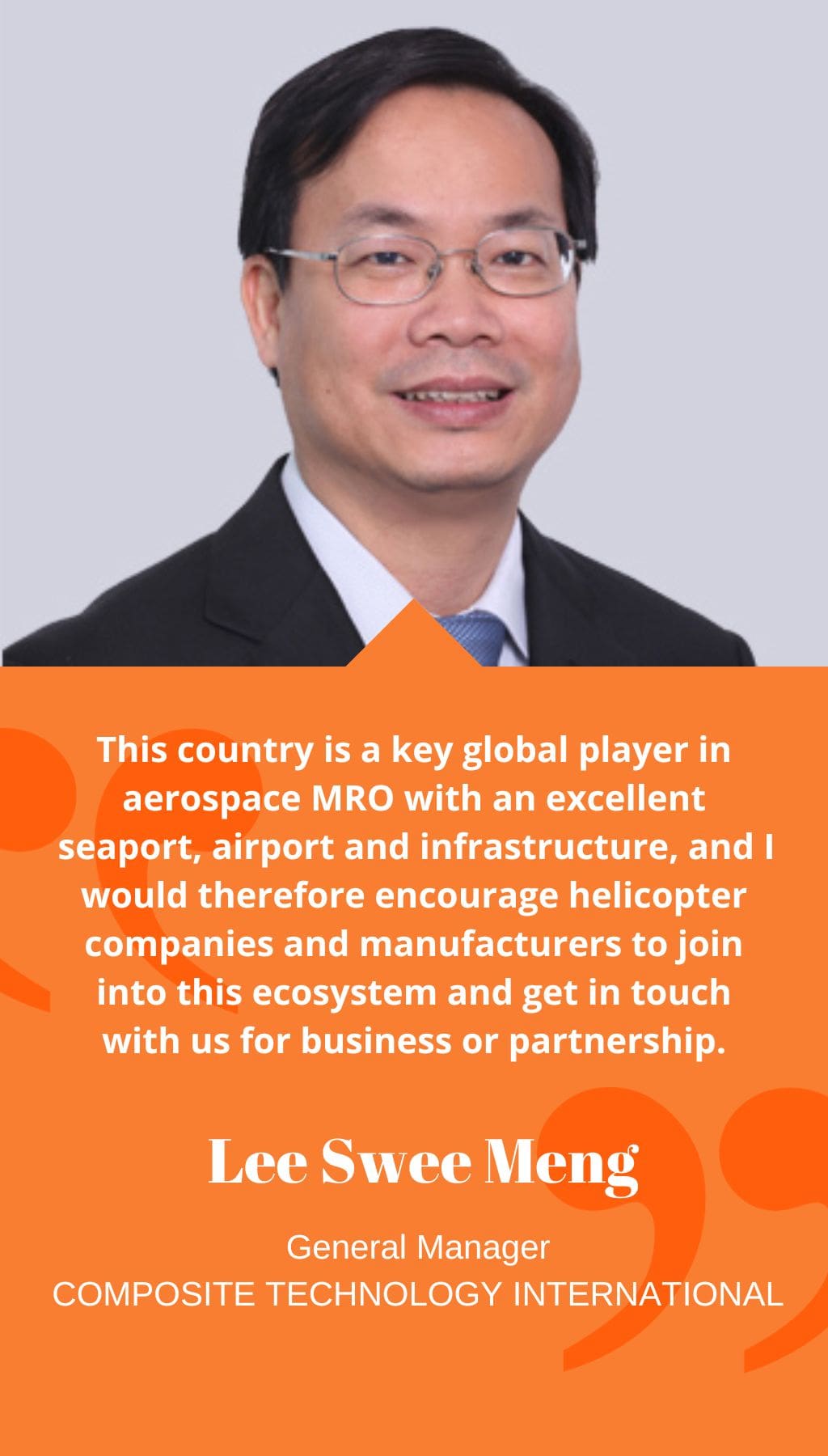
- Singapore | 19 May 2019

Could you describe the main ways in which CTIPL serves the aerospace sector in Singapore?
CTIPL was established in 1984 and currently services more than 120 customers in 18 countries within the Asia-Pacific region. We are an authorized customer service facility of Airbus Helicopters, Bell Helicopter, Leonardo Helicopters and Sikorsky. We have experienced exponential growth since 2012 and have sourced 12-14 new clients per year. We provide a full range of specialized services for composite and metal helicopter rotor blades, and all of our repairs take place in Singapore. Our operations are strategically located in Singapore to act as a hub for the region.
Have you perceived a decreasing industry trend from the OEMs themselves given the global downturn of oil prices?
CTIPL did factor in oil prices into the annual projection, but we discovered that the demand did not diminish. Companies such as Airbus Helicopters, Leonardo Helicopters and Bell Helicopter have described steady helicopter sales in the region.
Which would you say is the future trend for rotor blades in this realm, given the increase in the use of composite materials for manufacturing in the aerospace industry in general?
CTIPL has seen tremendous growth in blades that are made out of composite materials. In the past, there used to be only metallic rotor blades but today we work more on composite blades. We do not perceive a strong difference between the materials relating to repair processes though composite blades, which have a much longer finite life and are more repairable as compared to metallic blades, provide us more repair opportunities.
What percentage of your operations stem from military and defense as opposed to commercial aviation in Singapore?
CTIPL’s business comprises roughly 40% military and defense, and 60% commercial aviation. We work with international military/defense customers in countries such as the Philippines, Thailand, Indonesia, etc. We have six Approved Maintenance Organisation (AMO) approvals from relevant civil aviation authorities in this region and Europe.
What are the advantages of operating as a smaller company while servicing multinationals?
As a smaller company, CTIPL is much easier to manage and control. Our services remain focused on our core business of helicopter rotor blade repairs. We experience a low manpower turnover rate given the loyalty of our employees, who are all local. However, sourcing skilled labor is challenging.
What is your outlook for CTIPL for the next 3-5 years?
Regardless whether there is a slower growth in the market, we will inevitably reach a saturation point where our growth will slow down or plateau. CTIPL will continue to operate as a highly reputable company to partner with. Singapore will capitalize the rapid growth in aviation activities in Asia. This country is a key global player in aerospace MRO with an excellent seaport, airport and infrastructure, and I would therefore encourage helicopter companies and manufacturers to join into this ecosystem and get in touch with us for business or partnership.














